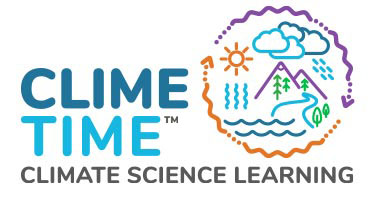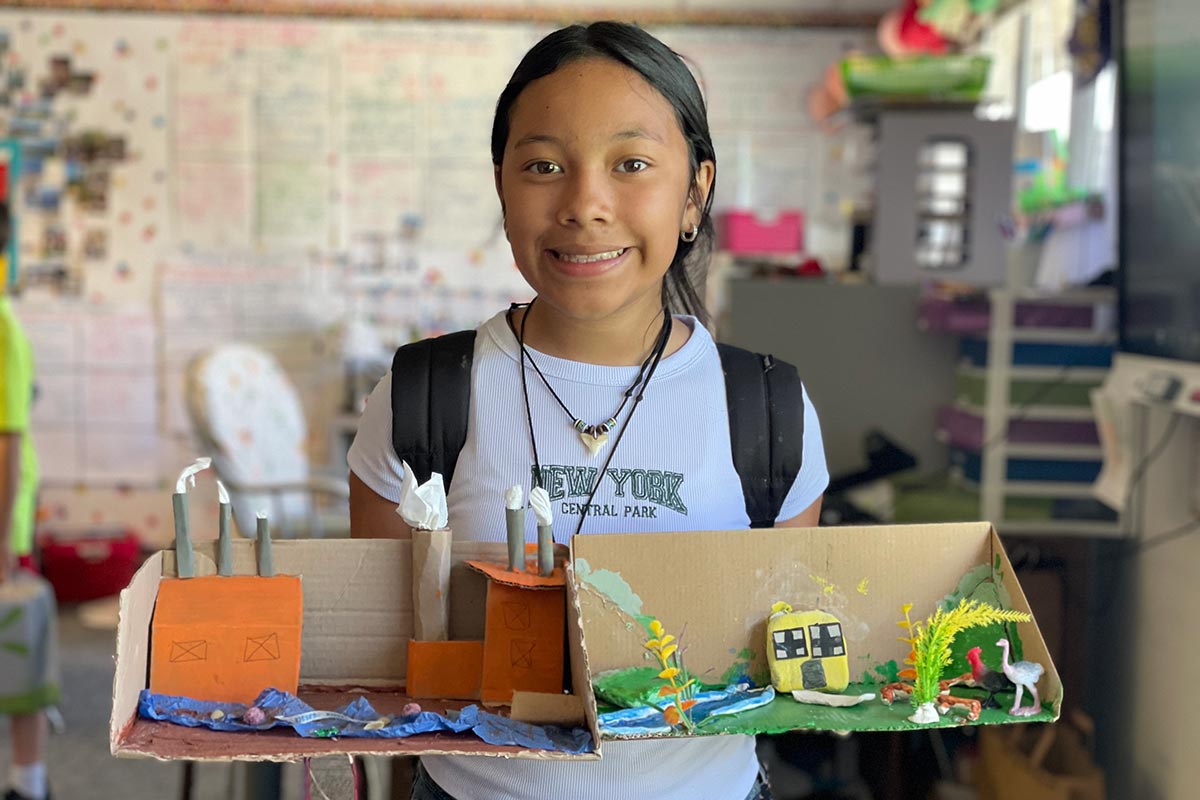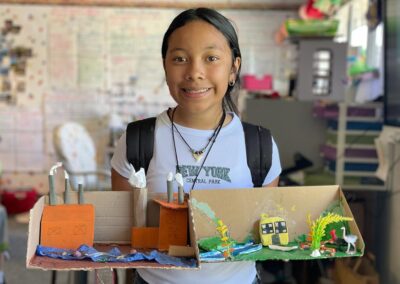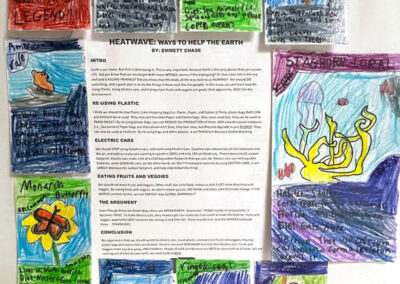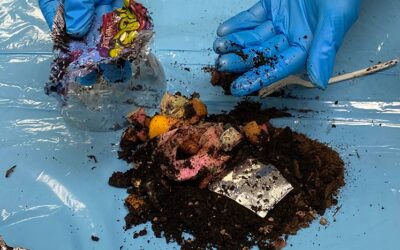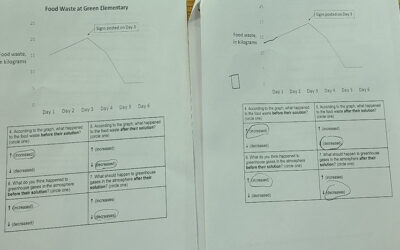What was tried in the classroom?
Unit Overview:
In this 4th-grade unit, students delved into the concept of climate change, its global effects, and its impact on animals and their habitats. Through engaging activities, discussions, and research, students developed a deeper understanding of climate change and its implications. The unit culminated with the students completing two follow-up projects using their researched information from a menu of six projects:
- A letter-writing activity, where students will express their thoughts on climate change and propose actions, they would like to see the President of the United States take to address this pressing issue.
- Creating a brochure to hand out to others educating them on global warming and its long-term effects on our Earth.
- Creating a six-frame cartoon. The theme being “Global Warming.” The cartoon should include a hero who fights to keep the Earth cool.
- Use a shoebox to create a diorama or display of the before and aftereffects of climate warming. One side of the box should be a contain before climate change and the other side should be the same landscape after the effects of global warming.
- Create a set of animal trading cards. Choose ten animals that are at risk of being extinct due to climate change. On one side or each card, illustrate a picture of the animal. On the other side, list the name of the animal, 5 facts that make the animal unique and why the animal is at risk due to climate change.
- Create a poster-sized vision board of what you’d like the Earth to look like in 100 years from now. Include photos from magazines, newspapers, or online and include quotes about the Earth and Earth’s creatures. Arrange the items artistically to express your thoughts.
Learning Objectives:
- Define climate change and understand its causes.
- Identify and describe global evidence of climate change.
- Recognize the impact of climate change on animals and their habitats.
- Develop critical thinking skills by analyzing the consequences of climate change.
- Communicate thoughts and ideas effectively through letter writing.
Lesson 1: Introduction to Climate Change
- Define climate change and its causes.
- Engage in a class discussion on the importance of understanding climate change.
- Watch age-appropriate videos or read books to introduce the topic.
Lesson 2: Global Effects of Climate Change
- Explore various global effects of climate change, such as rising temperatures, melting ice caps, and extreme weather events.
- Conduct research and create visual representations of these effects.
- Discuss the potential consequences for humans and the environment.
Lesson 3: Climate Change and Animals
- Investigate how climate change affects different animal species and their habitats.
- Analyze case studies and real-life examples.
- Create a collaborative project showcasing the impact of climate change on animals.
Lesson 4: Protecting Animal Habitats
- Discuss the importance of preserving animal habitats.
- Explore ways to mitigate the effects of climate change on habitats.
- Engage in a hands-on activity, such as creating mini-habitats or designing posters promoting habitat conservation.
Lesson 5: Writing a Letter to the President
- Introduce the purpose and structure of a persuasive letter.
- Brainstorm ideas for addressing climate change.
- Draft and revise individual letters expressing thoughts and proposing actions to the President.
- Share and discuss letters within the class.
Lesson 6: Reflection and Action
- Reflect on the unit’s key concepts and learning experiences.
- Discuss ways students can take action to combat climate change in their daily lives.
- Encourage students to share their knowledge with others and advocate for change.
Assessment:
- Class participation and engagement during discussions and activities.
- Completion of research projects, visual representations, and collaborative projects.
- Quality and clarity of the letter to the President, demonstrating understanding of climate change and proposing actionable solutions.
How’d it go?
As a teacher, I observed high levels of student engagement throughout the climate change unit. The topic of climate change sparked curiosity and concern among the students, leading to active participation in discussions, research, and hands-on activities.
During the introduction to climate change, students showed enthusiasm in sharing their prior knowledge and asking thought-provoking questions. They were eager to learn about the causes and effects of climate change, and actively participated in class discussions, sharing their own observations and experiences related to heatwaves and wildfires and are prevalent in our area.
When exploring the global effects of climate change, students demonstrated a strong interest in understanding the impact on different regions and ecosystems. They engaged in research activities, using various resources to gather information and create visual representations. The collaborative project on the impact of climate change on animals also fostered teamwork and critical thinking skills, as students analyzed case studies and worked together to present their findings.
The letter-writing activity to the President of the United States was a highlight of the unit. Students expressed their thoughts and concerns about climate change with passion and conviction. They proposed actionable solutions, demonstrating a deep understanding of the topic and a desire to make a difference. The sharing and discussion of these letters within the class created a sense of empowerment and inspired further conversations about climate change.
Throughout the unit, I noticed that students were motivated to take action and make changes in their own lives. They showed a genuine interest in finding ways to combat climate change, both individually and collectively. They eagerly shared their ideas and strategies for reducing their carbon footprint and promoting environmental sustainability going as a far as writing and meeting with our principal to start a school-wide recycle program and monthly campus clean ups.
Overall, the climate change unit successfully engaged students and fostered a sense of responsibility towards the environment. It provided them with the knowledge and tools to understand the urgency of addressing climate change and empowered them to take action. Past students have returned to me and express that this was their favorite unit of study.
ClimeTime Training
Climate Change in Every Classroom: Season of Smoke
Classroom
School: Virgina Granger Elementary School
District: Okanogan School District
Teacher: Kara Thornton
